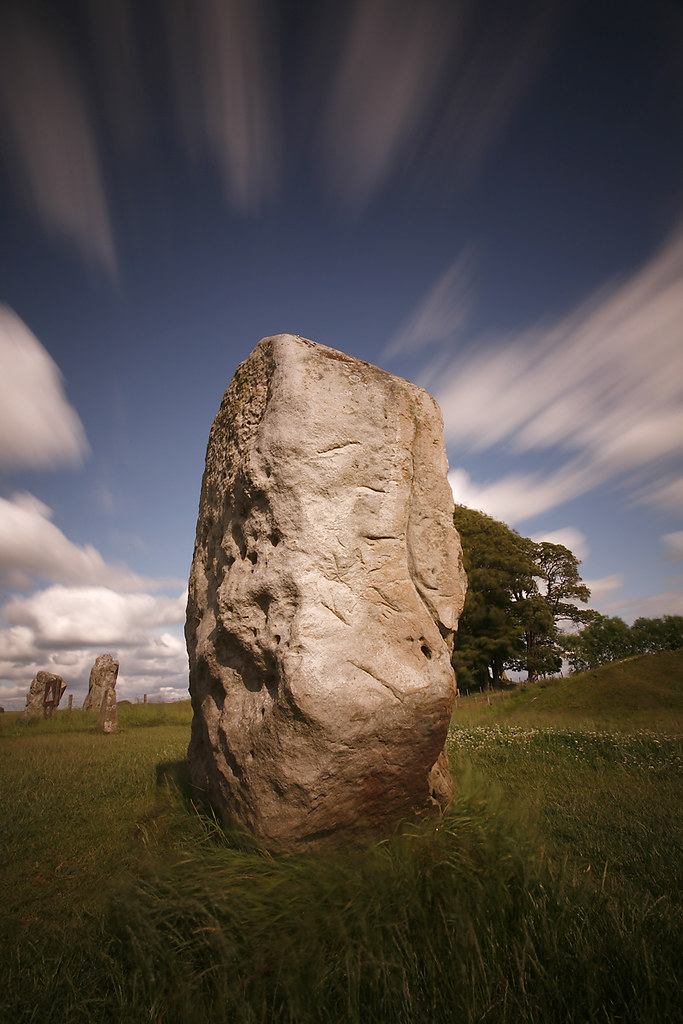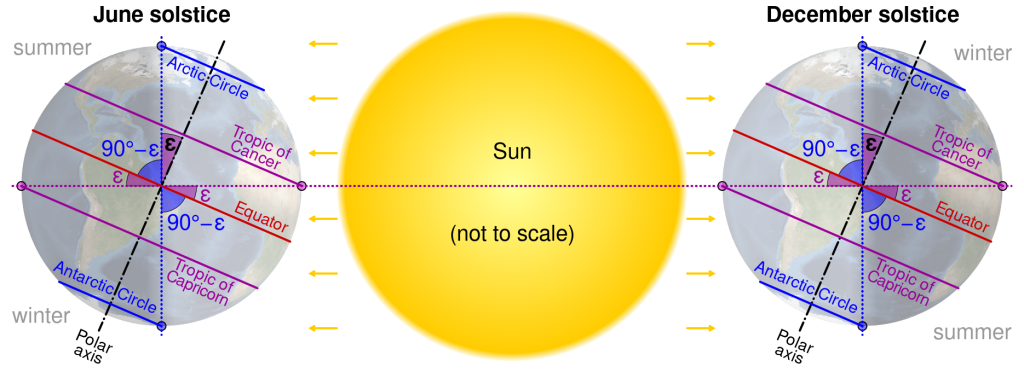
The day that gives the Earth the longest daytime in the Northern Hemisphere and the longest nighttime in the Southern Hemisphere goes by many names. In the Northern Hemisphere, it’s referred to as the Summer Solstice, and in the Southern Hemisphere, it is considered the Winter Solstice. I often like to refer to the holiday by the hemisphere-neutral term “Northern Solstice” so that I can honor Pagan practitioners in both hemispheres. Many people in Northern Europe like to refer to the day as Midsummer (Midsommar). Wiccans refer to this day in the Northern Hemisphere as Litha where as the day in the Southern Hemisphere would be Yule.
The word “Solstice” evolves from the Latin words “Sol,” meaning the sun, and “stit” which is from the Latin word “sistere,” which means “to stand still.” The ancients were very observant of the position of the sun in the sky, more than we humans are today, and they would see how the sun’s path from east to west would change in the sky. We can get a sense of their keen observation by using a camera fixated on the same spot in the sky at the same time of day all year-round. Around the time of the solstices, the sun appears to stop at either its highest point or lowest point in the sky depending on the location and time of year.

The ancients viewed this as the movement of the sun, but we know now that this has more to do with the movement of the Earth relative to the sun. The tilt of the Earth stays constant and today, the earth’s current position in its orbit around the sun exposes the Northern Hemisphere to the most direct sunlight it will enjoy, with the most direct of the sun’s rays shining down on the Tropic of Cancer.
The ancients monitored the movement of the sun very closely as this would indicate the time of the year and helped people make decisions regarding agriculture, hunting, and migration. To be in tune with the Earth at this time in human history is to appreciate the Earth and how life is affected by these changes throughout the year.
When I was first initiated as a Pagan in the ‘90s, our group observed the Celtic fire holidays of Imbolc, Bealtaine, Lughnasadh and Samhain. With the solstices and equinoxes, we celebrated we simply referred to them as the Summer Solstice, Winter Solstice, Spring Equinox, and the Autumn Equinox. Our group didn’t explicitly refer to itself as Wiccan. “Eclectic” would have been a better description. But we did engage in the Wicca practice of “calling the quarters.” We did not, however, adopt the Wiccan names for the Spring and Autumnal Equinox or the Summer Solstice. These names were arrived upon by Pagan practitioner Aidan Kelly, and his explanation for those names are here.
Kelly chose the name “Litha” for the summer solstice based on the Saxon calendar as reported by Bede in the eight century CE. He observed how the lunisolar calendar had the months Foreyule and Afteryule around the time of the Winter Solstice and, similarly, the months Forelitha and Afterlitha occurred around the time of the Summer Solstice, with a third “Litha” month added between the other Litha months during leap years. It’s easy to infer that Litha must have meant the summer solstice, but I don’t know if there is other documentation to back that up.
While referring to the solstices and equinoxes by Germanic, Saxon or Welsh names has some appeal, I prefer to simply refer to them as the solstices and equinoxes, because they are a precise description of what is happening, and the layperson understands it well. I had a powerful experience that called me to look for local Pagan groups for the first time back in 1991, and at that time, I wrote in my journal, “I must attend the Autumn Equinox,” which would have been in another three weeks. The word “Mabon” would not have occurred to me.
There are many traditions related to the Summer Solstice all around the world and in northern Europe, the holiday is often referred to as Midsummer. These are always world exploring, but for me the most significant and salient experiences are the unique alignments between the Earth and the Sun and the implication it has for life on this planet.
